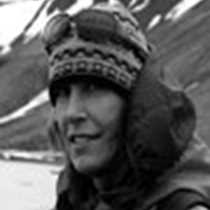Ucayali River: Supay and Flor de Castaña
Each excursion brings a new surprise. This is at once not at all shocking and a huge source of wonder. Our pre-breakfast excursions at the river that leads to Lake Supay allowed us to refine our Amazonian eyes, and one lucky kayaker even spotted a species of monkey new to us this trip: the dusky titi. It bounded out of view quickly, but a few of us got a look. “Yes,” we could say at this point, “it’s different than a squirrel monkey, not quite a saddleback tamarin, definitely not a capuchin because the tail didn’t grab a branch.” We’ve come a long way in tuning our gaze to this world.
After breakfast, we headed further into Lake Supay itself. There, we found flooded stands of palms and a plethora of parakeets. It’s possible that this lake should be renamed the flooded orchid forest, for we skiffed along at eye level with epiphytic orchids galore. We were, it should be noted, traveling nearly in the canopy here, with twenty or so feet of lake covering the base of these trees. Most of the orchids were bloomless, displaying only their impressive seed pods, but we did find one spider orchid tucked along the bank.
Another interesting feature of the morning exploration was the presence of fishermen. There were nets being set, nets being mended, and nets being brought in by canoe to the lake (as well as smaller net-tending canoes). We stopped and talked to some fishermen, and it seems that the spawning season for fish is near, and so fishing has intensified. During our conversation with a group of men mending nets in a canoe, one of their party was busy cleaning fish for lunch: piranha, it turned out. He kindly allowed us a chance to observe this legendary fish.
In the afternoon, the Delfin II made its way downriver to Flor de Castaña. This lovely lake and community would be our afternoon destination. The sun beat down in true Amazonian style, and after a long week of relatively cool weather, we at last got a sense of the necessity of avoiding the midday. In the lake and the arbor muerte beyond, we had wonderful views of woodpeckers and parakeets—cavity nesters one and all. The silver trunks of trees glinted in late sun, and while we felt badly for the fact that these giants would no longer be producing leaves and growing up beyond the canopy, we were glad for a chance to see a bit more without peering through foliage.
Thunder cracked its whip while we were out, and although we didn’t rush back to the Delfin II, we were aware of the gathering clouds. Back aboard, we gravitated toward the lounge, where a slideshow of our trip played and we chatted as our memories were prompted. It’s been a full, full week, and there’s more to come. Tomorrow, we’ll explore the tributaries around Puerto Miguel as well as the town’s market. Tomorrow, we’ll see the beginning of the Rio Amazonas as it’s marked on the maps. We all know, of course, that what we’ve experienced this past week is richer, stranger, and more wonderful than that semi-arbitrary point, but touchstones of place are important to honor. They are a nexus of memory-triggers and associated stories, and we’ll bring much of both to our visit.




